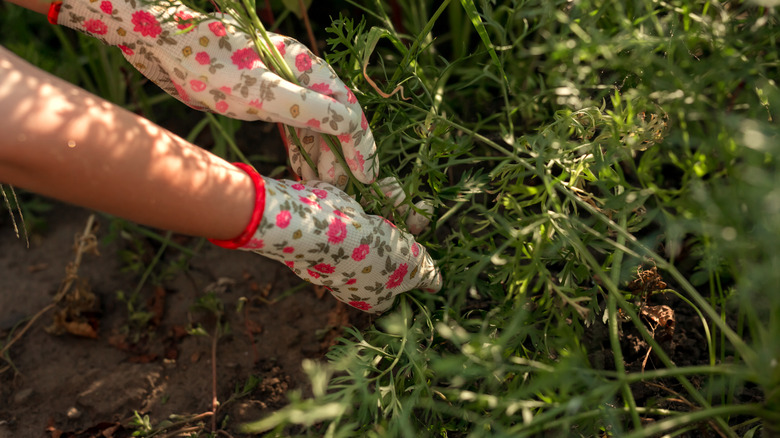Why You Should Thin Out Your Vegetable Garden, According To Martha Stewart's Gardener
If you grow your garden from seed, it's always best to plant as many as possible to guarantee the strongest crop. However, according to Ryan McCallister, Head Gardener at Martha Stewart's garden, it's not about shoving plants into every available space, but guaranteeing you have the perfect number for a great crop.
"Thinning" the vegetable garden means that, once your plants have started to grow, you remove your excess to give your remaining ones the space they need to flourish. While tightly planting seeds for everything from the easiest vegetable to grow, kale, to underrated garden vegetables like okra and chard, gives you a ton of them, they won't have the space or nutrients to reach their full size. Best-case scenario, you'll be left with a crop of undersized produce. Worst-case, your plants may simply die.
While it may seem wasteful, thinning plants guarantees a better crop and gives you plenty of materials for other activities. For root vegetables like juvenile carrots, you can always eat them after you thin your garden, as they'll still have great taste despite their size. For fruiting vegetables that haven't produced anything yet, try repurposing them into next year's compost, guaranteeing that their sacrifice improves your next planting. How you thin your vegetables depends on what you've planted, but it's always best to err on the side of caution rather than risk the well-being of your crop.
How to thin your vegetable garden
To avoid stressing out your plants and possibly depriving them of nutrients, you'll need to thin your vegetable garden early, usually only a few weeks after planting. Once your seeds sprout a couple sets of leaves, start by plucking every other plant and giving each seedling at least an inch or two of breathing space. When possible, try to remove the runtiest of the patch to let the strongest flourish.
For root vegetables, your best bet is to simply pluck them right out of the soil. Their roots are large enough to stay in the soil for some time, blocking the growth of your other plants, despite them slowly dying. For ones that grow above ground like tomatoes, all you have to do is clip them at ground level and let their much thinner root system compost back into the soil. If you don't want to immediately eat or compost your thinned plants, you can always attempt to carefully remove them with a hand spade and transplant them elsewhere.
Try to time your thinning around when you need to water your vegetable garden. A post-thinning watering helps soil settle back around your remaining plants' roots. Remember that roots are extremely sensitive to any and all disturbances, whether that's exposure to the sun, hot or cold temperatures, or just being jostled during the thinning process. Always try to thin your garden as gently as possible, only handling the plant you're removing to help your remaining ones thrive.


